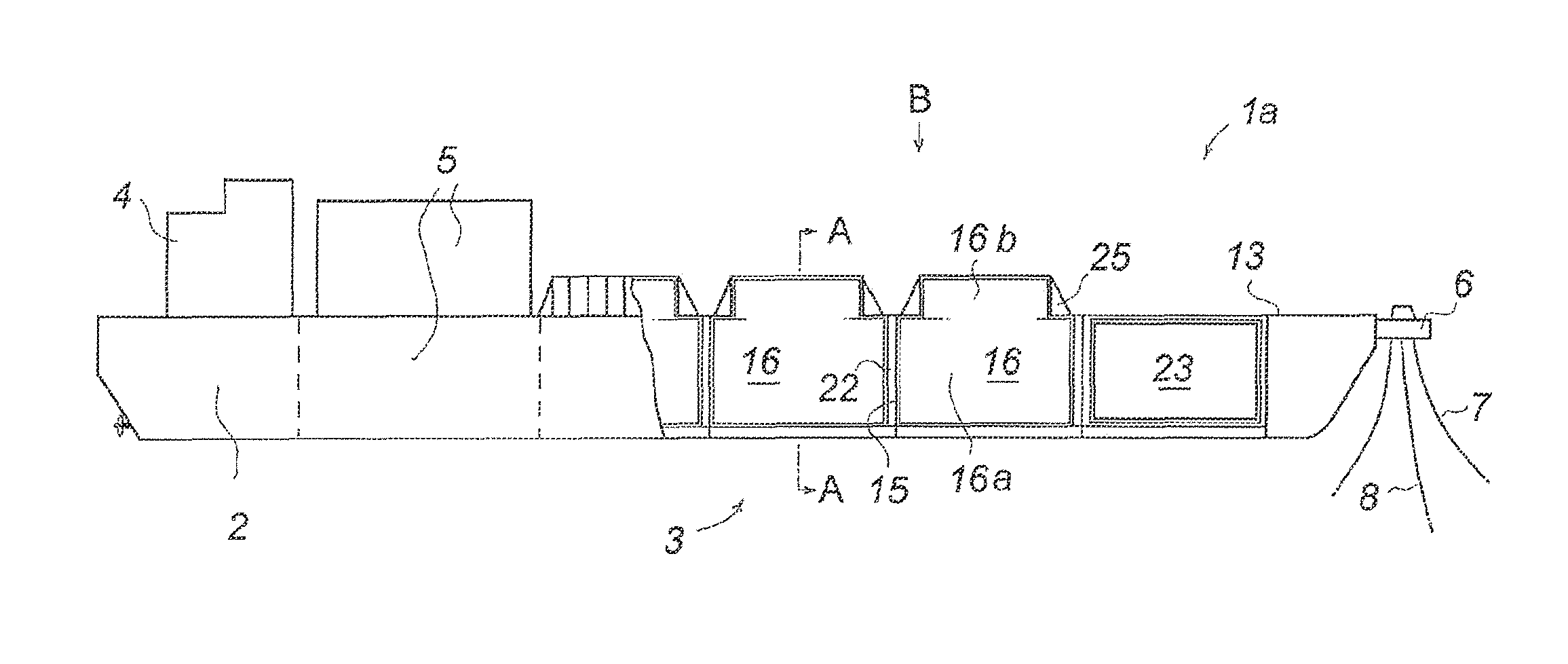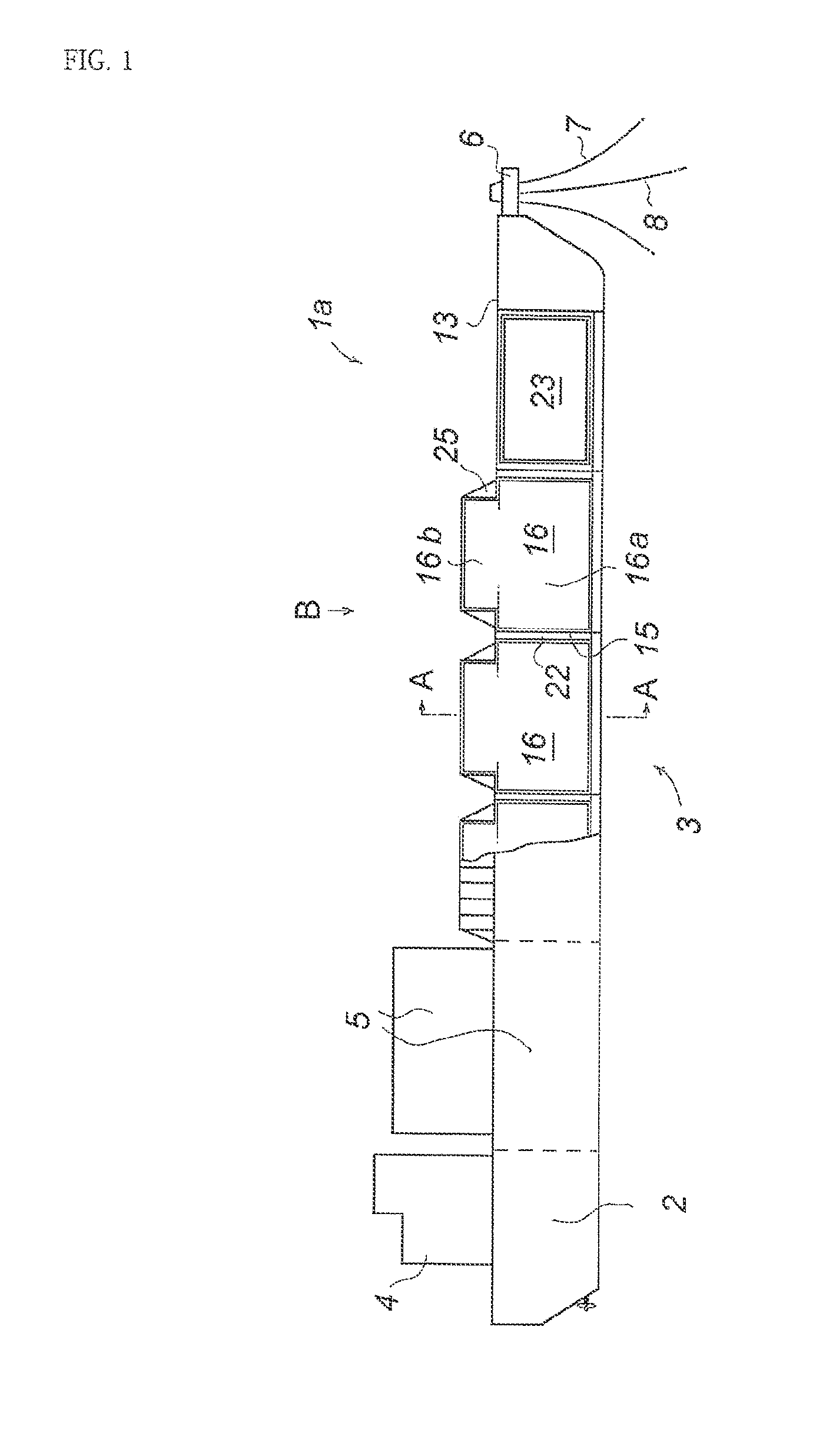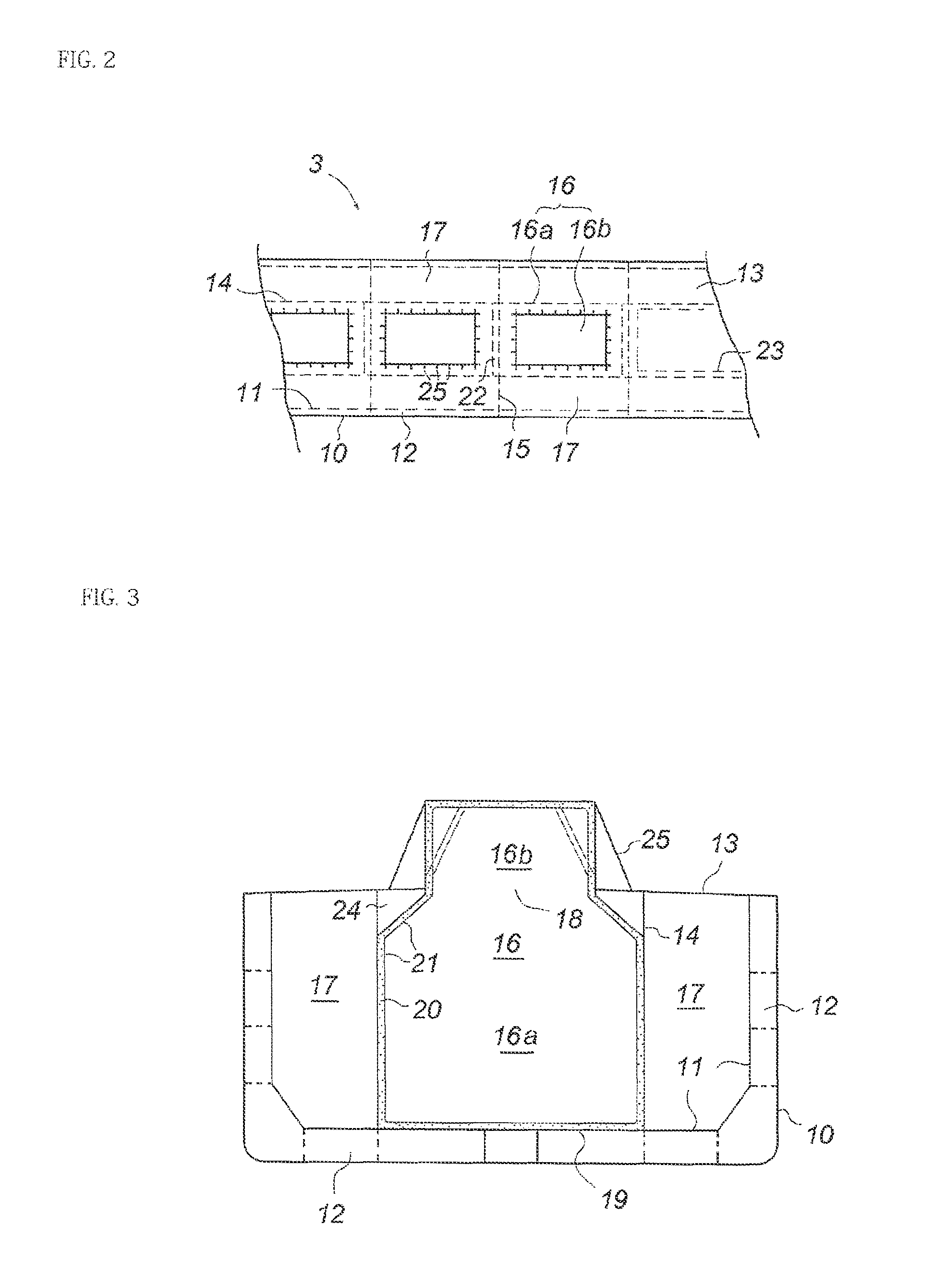LNG ship
a technology for lng ships and hulls, which is applied in the direction of vessel construction, container discharging methods, hull parts, etc., can solve the problems of high risk of sts cargo handling on the ocean, damage to the hull, and care needs to be taken, so as to reduce the risk of sloshing, the effect of reducing the volume of the tank and reducing the risk of damag
- Summary
- Abstract
- Description
- Claims
- Application Information
AI Technical Summary
Benefits of technology
Problems solved by technology
Method used
Image
Examples
Embodiment Construction
[0020]FIG. 1 is a side view of a LNG-FPSO denoted by reference sign 1a, is according to this invention. Note that this ship is remodeled from a ship which is originally a ship exclusive for crude oil / ore. Of course, it can be newly built from the first. In its stern, there is an engine room 2, and an area in front of the engine room 2 is a tank space 3. In the rear of an upper deck, there is an accommodation area 4, and in front thereof, a LNG production plant 5 is mounted. On a bow part, a turret 6 that a LNG-FPSO commonly has is provided, and a mooring wire rope 7 extending from an anchor fixed to the bottom of the sea is connected to this turret to perform various kinds of works in a single-point mooring state. A riser pipe 8 rising from the bottom of the sea is also connected to the turret, and natural gas collected from a gas field is sent through this pipe to the LNG production plant 5 on board. The natural gas is refined and liquefied here and sent to and stored in several LN...
PUM
 Login to View More
Login to View More Abstract
Description
Claims
Application Information
 Login to View More
Login to View More - R&D
- Intellectual Property
- Life Sciences
- Materials
- Tech Scout
- Unparalleled Data Quality
- Higher Quality Content
- 60% Fewer Hallucinations
Browse by: Latest US Patents, China's latest patents, Technical Efficacy Thesaurus, Application Domain, Technology Topic, Popular Technical Reports.
© 2025 PatSnap. All rights reserved.Legal|Privacy policy|Modern Slavery Act Transparency Statement|Sitemap|About US| Contact US: help@patsnap.com



